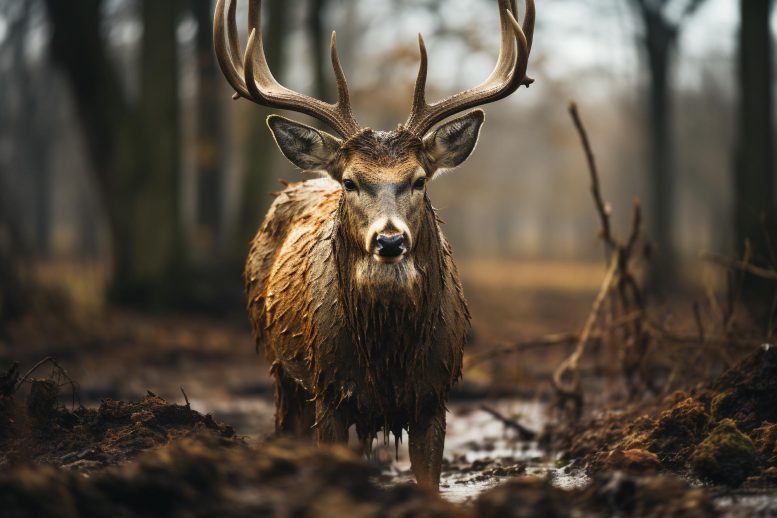
The U.S. Department of Agriculture’s (USDA) Animal and Plant Health Inspection Service (APHIS) has found that SARS-CoV-2, the virus causing COVID-19, has widely spread within the U.S. white-tailed deer population, possibly transmitted from humans to deer, where it mutated and potentially transmitted back to humans. The findings are part of a study involving the surveillance of over 11,000 white-tailed deer.
USDA’s APHIS research indicates that SARS-CoV-2 has spread widely among U.S. white-tailed deer, possibly transmitted from humans, where it mutated and could have transmitted back to humans.
The U.S. Department of Agriculture’s (USDA) Animal and Plant Health Inspection Service (APHIS) released national research from its first year of studies and sampling of white-tailed deer (Odocoileus virginianus) for active infection of SARS-CoV-2, the virus that causes COVID-19. These studies show that SARS-CoV-2 is likely to have spread widely within the U.S. white-tailed deer population.
Additionally, their research shows that SARS-CoV-2 was transmitted from humans to deer, mutated, and was potentially transmitted back to humans. This research is helping us understand if cervids, such as white-tailed deer, are acting as a host or “reservoir species,” meaning an animal host where the virus can survive and potentially change.
While experts are still learning about SARS-CoV-2 in animals, there is no evidence that animals play a significant role in spreading the virus to humans.
“APHIS’ work to answer critical animal and public health questions around SARS-CoV-2 is continued with this research,” said Dr. Mike Watson, APHIS’ acting Administrator. “However, additional research using a One Health approach is needed to understand what the risks are to wildlife conservation and public health with continued circulation of this disease in wildlife.”
Mr. Gary Nohrenberg, Minnesota State Wildlife Services Director, discusses the first year of white-tailed deer surveillance data. This research continues APHIS’ work researching SARS-CoV-2 in wildlife and helps the Agency better understand how a disease that affects both humans and animals is moving and evolving in wildlife and how research better equips us to deal with future zoological disease outbreaks.
APHIS is currently in Year 2 of this research and has expanded disease surveillance for SARS-CoV-2 to other members of the deer family and additional States, territories, and Tribes. During the first year of sampling, APHIS and partners sampled over 11,000 white-tailed deer for SARS-CoV-2. We detected the virus in 12.2% of white-tailed deer, and 31.6% had antibodies indicative of previous SARS-CoV-2 exposure. Year 1 surveillance data, questions and answers, and other information on the APHIS white-tailed deer surveillance program are available on the Agency website.
The collaboration between APHIS, state wildlife agencies, and others to conduct wildlife surveillance for SARS-CoV-2 is part of a more significant effort to strengthen our Nation’s ability to detect and respond to future emerging diseases in animals.
APHIS partnered with the University of Missouri and the Centers for Disease Control and Prevention (CDC) on a recently published study resulting from this surveillance, “Transmission of SARS-CoV-2 in free-ranging white-tailed deer in the United States.”
Between November 2021 and April 2022, APHIS, state and tribal wildlife agencies, the Ohio State University, and the University of Missouri conducted wildlife surveillance for SARS-CoV-2 in free-ranging white-tailed deer, collecting more than 9,000 respiratory samples in 27 states. We found that SARS-CoV-2 was transmitted from humans to white-tailed deer at least 106 times in the United States, mutated, and then in three instances may have been transmitted back to humans.
“Deer regularly interact with humans and are commonly found in human environments — near our homes, pets, wastewater, and trash,” said Dr. Xiu-Feng “Henry” Wan, University of Missouri professor and director of the NextGen Center for Influenza and Emerging Infectious Diseases. “The potential for SARS-CoV-2, or any zoonotic disease, to persist and evolve in wildlife populations can pose unique public health risks.”
APHIS is currently conducting numerous projects to understand how the SARS-CoV-2 virus behaves in different animals, how it moves between animals and people, and what their public health partners can do to interrupt the chain of transmission. APHIS’ strategic framework outlines how the agency is focusing its efforts to prevent, detect, investigate and respond to SARS-CoV-2 in animals and other emerging diseases that could threaten humans and animals.
“This research is helping us better understand how a disease that can affect both people and animals is spreading and evolving in the real world, and better equipping us to deal with future infectious disease outbreaks,” said Dr. Ria Ghai, CDC researcher.
Human, animal, and environmental health groups increasingly collaborate when One Health questions arise. APHIS and its One Health partners work together to harness the unique skills, knowledge, specific perspectives, and experiences to strengthen its understanding of SARS-CoV-2 and enhance its ability to detect diseases sooner.
Reference: “Transmission of SARS-CoV-2 in free-ranging white-tailed deer in the United States” by Aijing Feng, Sarah Bevins, Jeff Chandler, Thomas J. DeLiberto, Ria Ghai, Kristina Lantz, Julianna Lenoch, Adam Retchless, Susan Shriner, Cynthia Y. Tang, Suxiang Sue Tong, Mia Torchetti, Anna Uehara and Xiu-Feng Wan, 10 July 2023, Nature Communications.
DOI: 10.1038/s41467-023-39782-x

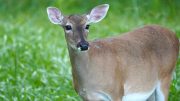
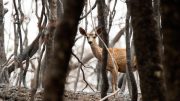
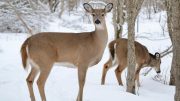
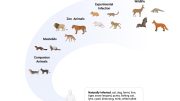

deer must wear masks
The key missing piece of information: how did a human transmit the SARS to a deer? While sitting around a camp fire after a long day’s hunting?
It’s very easy actually. Humans kept walking around the forest as hikers often do and they threw away half eaten apples/apple cores, poor deers of course ate those saliva contaminated fruits. (could of course talk about any other food humans typically throw away after being ‘done’ with them)